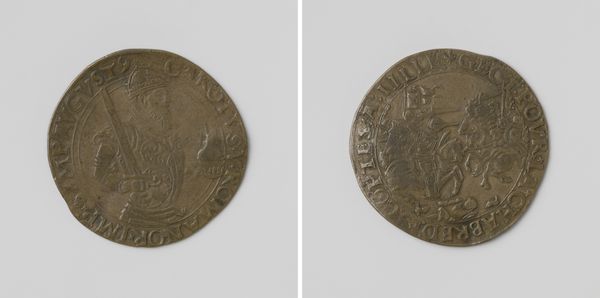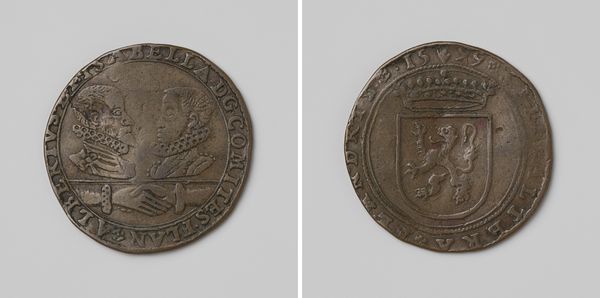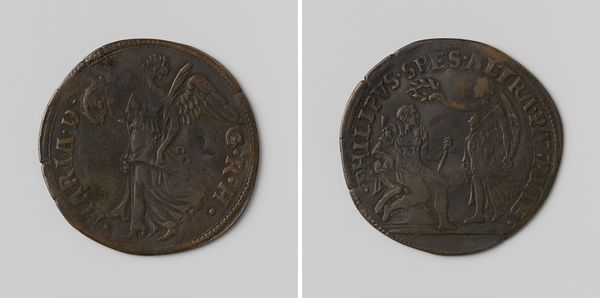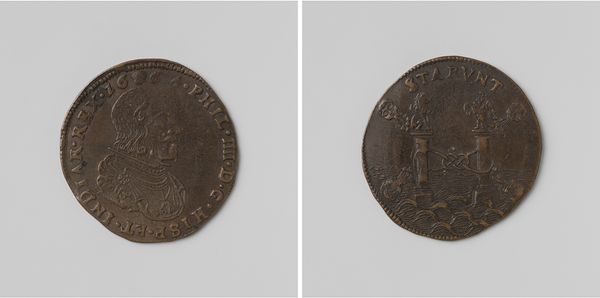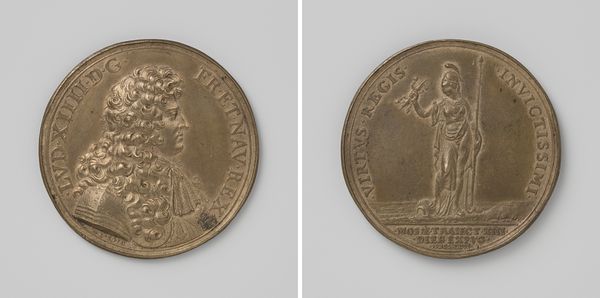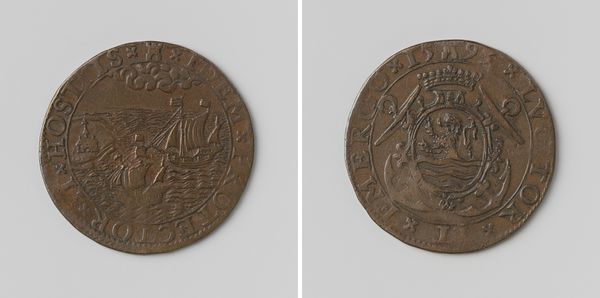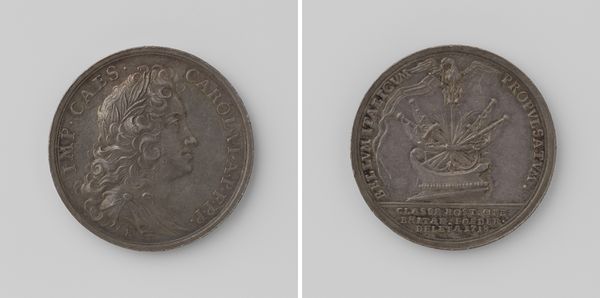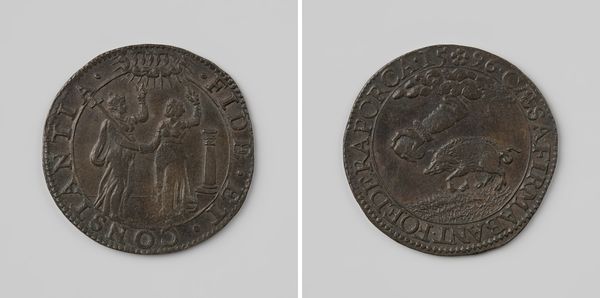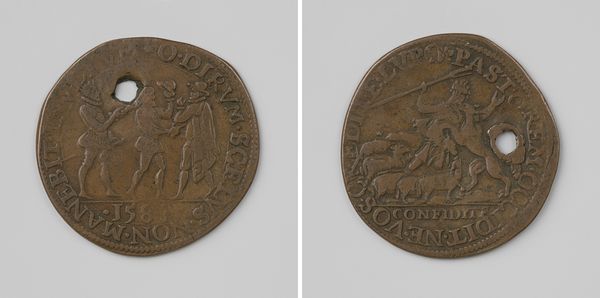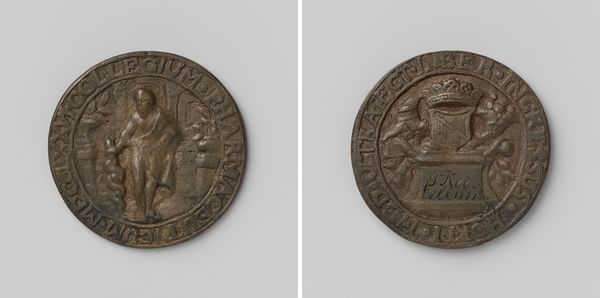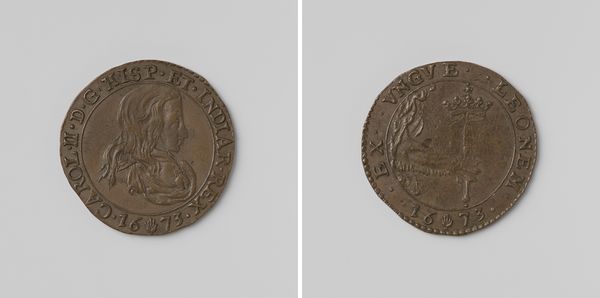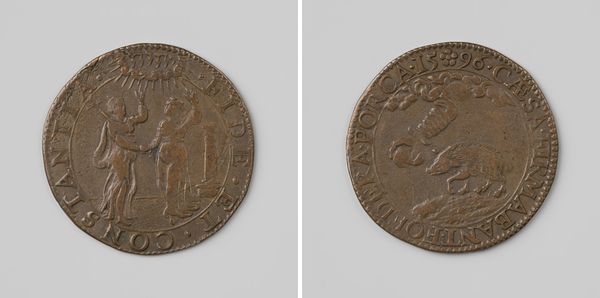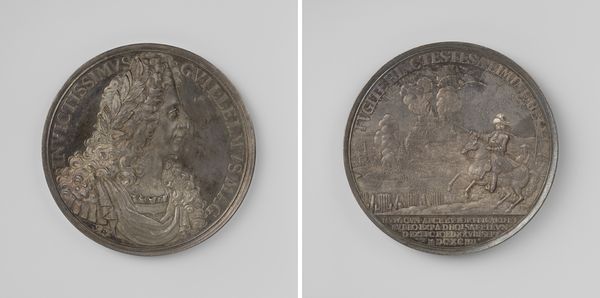
Sluiting van het drievoudige verbond tussen Engeland, Frankrijk en de Republiek 1596
0:00
0:00
print, metal, engraving
# print
#
metal
#
ancient-mediterranean
#
history-painting
#
engraving
Dimensions: diameter 2.8 cm, weight 58 gr
Copyright: Rijks Museum: Open Domain
Curator: The artwork we’re looking at here, currently held at the Rijksmuseum, is an engraving called "Sluiting van het drievoudige verbond tussen Engeland, Frankrijk en de Republiek." It’s dated 1596 and was made anonymously. Editor: Immediately I’m struck by the medium. The coppery tones of the metal seem weighty and substantial, like history literally pressed into form. How were these intricate designs physically imprinted, I wonder? Curator: It is amazing! This image serves as a symbolic marker of an alliance between three nations. Observe the allegorical female figures representing the different countries, each differentiated by attire and gesture. Editor: Those allegories! The way they clasp hands… It brings into stark relief the economic implications behind this joining of nations. Where was the metal sourced? Who labored to produce these engravings, and what was the intended audience for its consumption and display? Curator: Exactly. Notice the arrangement of text and figures carefully constructing an ideal of unity and shared governance. Editor: Shared governance – ideals, always ideals! Still, even a symbol carries its own material weight. Mass-produced in this fashion, how else might such images participate in propagandizing conflict or promoting cultural exchange between the regions involved? Curator: Propaganda can come in so many shapes and sizes. It is really impressive to think this object immortalized the signing of the treaty of Greenwich, ensuring collective defense. This object holds memories of a key event in time. Editor: Indeed. Considering its modest scale alongside the intricate inscription, you sense this engraving operated more like a subtle form of authority—easily exchanged, silently witnessing, potentially far-reaching in its influence across physical boundaries and class structures. Curator: That really does provide a comprehensive framework. Examining symbols this way, against their production and uses, we can deepen our experience with historical objects. Editor: I agree, uncovering a piece's making reveals the values it seeks to imprint, whether subtly or explicitly.
Comments
No comments
Be the first to comment and join the conversation on the ultimate creative platform.

